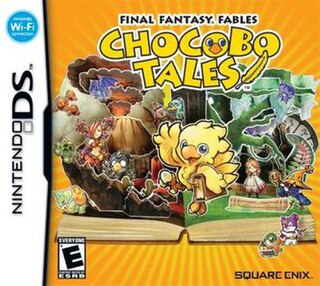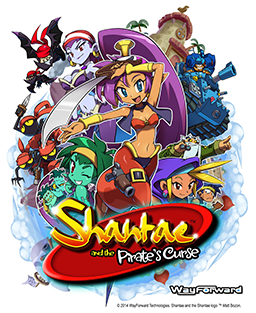
Tyrian is a vertically scrolling shooter developed by Eclipse Software for MS-DOS and published in 1995 by Epic MegaGames. Tyrian was programmed by Jason Emery, illustrated by Daniel Cook, and its music composed by Alexander Brandon and Andras Molnar. The game was re-released as freeware in 2004. A free and open-source port of the game started in April 2007.

The Simpsons: Bart's Nightmare is a 1992 video game developed by American company Sculptured Software based on the television show The Simpsons. The game, split into two parts, follows Bart on the street, trying to find his homework pages. The second part of the game consists of minigames. It was released on the SNES and the Sega Genesis. A sequel, Virtual Bart, was released in 1994. Production conflicts resulted in American game designer Bill Williams to leave the video game industry. The game received reviews from critics such as Entertainment Fun comedy and more!

ZanZarah: The Hidden Portal is an action-adventure video game by the German company Funatics Development, released in 2002 by the publisher THQ. An expansion was in development in 2002, but was later cancelled. The game involves travels and combats in a magical world loosely associated with our own world. Versions for Xbox, PlayStation 2 and Gamecube were announced in 2003 but later cancelled.

Harvest Moon: Magical Melody is a social simulation video game for the GameCube developed by Marvelous Interactive. It is an updated version of Bokujō Monogatari: Shiawase no Uta, which was released on March 3, 2005 in Japan. The updated GameCube version was released in the United States by Natsume Inc. on March 28, 2006.

Circus Caper, known as Moeru! Onīsan in Japan, is the title of a side-scrolling Nintendo Entertainment System video game where the player controls a young boy on a quest to save his sister who has been kidnapped by the circus. The game was released in 1989 by Toho and received poor reviews.

Dragon Quest Swords: The Masked Queen and the Tower of Mirrors is a role-playing video game developed by Genius Sonority and Eighting and published by Square Enix for the Wii game console. The game is a spin-off from the Dragon Quest series, and was first released in Japan in July 2007, and worldwide the following year.
Rayman is a franchise of platformer video games, created by video game designer Michel Ancel for Ubisoft. Since the release of the original game in 1995, the series has produced a total of forty-five games across multiple platforms.

Cocoto Platform Jumper is a platform game developed by Neko Entertainment and published in 2004 in PAL regions by BigBen Interactive for PlayStation 2 and GameCube. Versions were later released for Microsoft Windows (2006) and Game Boy Advance (2007), then for Wii in North America and PAL in 2009.

Final Fantasy Fables: Chocobo Tales, released in Japan as Chocobo to Mahō no Ehon is a Nintendo DS adventure game developed by h.a.n.d. and published by Square Enix. It was released in Japan on December 14, 2006, in North America on April 3, 2007, and in the PAL region in May.

Wii Play is a party video game developed and published by Nintendo for the Wii console. It was released as a launch game for the console in Japan, Europe, and Australia in December 2006, and was released in North America in February 2007. The game features nine minigames, including a Duck Hunt-esque shooting range, a fishing game, and a billiards game, each of which are designed to showcase the features of the Wii Remote controller.

The Wii Zapper is a gun shell peripheral for the Wii Remote. The name is a reference to and successor of the NES Zapper light gun for the Nintendo Entertainment System. It is mainly used to enhance controls for shooter games, including light gun shooters, first-person shooters, and third-person shooters.

Dewy's Adventure is a platform game for the Wii console by released by Konami. in 2007 It was developed by the same team that developed Elebits, another Wii exclusive.

Disney's Villains' Revenge is a video game developed and published by Disney Interactive for Microsoft Windows and Macintosh in 1999. The gameplay is an interactive "point-and-click" method in various forms, featuring the player helping Jiminy Cricket save the happy endings of several of the Disney's animated films from the vengeful, greedy Disney Villains.

Wario is a video game series, a spin-off of the Mario franchise. It comprises various video games created by Nintendo, starring the character Wario. The series began with Wario Land: Super Mario Land 3, the first game to feature Wario as a playable character. The Wario series includes mostly platforming video games and minigame compilations, but also includes other genres.

Crash: Mind over Mutant is a 2008 platform game developed by Radical Entertainment for the PlayStation 2, PlayStation Portable, Wii and Xbox 360. The Nintendo DS version of the game was developed by Tose. It was released in North America on October 7, 2008, and was later released in Europe and Australia on October 30 and October 31, respectively. It is the second game in the series not to have a Japanese release,, the first to be published by Activision following its merging with the series' previous publisher Vivendi Games, and the last major console entry as a whole until 2017's Crash Bandicoot N. Sane Trilogy — a remaster of the first three Crash games.

MySims Agents is a 2009 mystery life simulation video game published by Electronic Arts. The fifth instalment in the MySims series, it was released in Europe on September 25, 2009, and in Australia on October 5, 2009 for both the Nintendo DS and the Wii. It was slated for release on June 16 in North America for both consoles, but was instead released on September 29. In the Wii version, the player is tasked with solving several cases which help the player determine the evil plot of the game's antagonist, while unlocking additional features which are essential to completing the game. For the DS version, the player has to take part in several minigames and interact with various townspeople to find a thief who attempts to steal a secret treasure.

Shantae and the Pirate's Curse is a 2014 platform video game developed and published by WayForward Technologies for the Nintendo 3DS and the Wii U. It is the third game in the Shantae series, following Shantae: Risky's Revenge, and the first to be developed for a home console. The game follows the adventures of the eponymous half-genie Shantae as she once again has to save Sequin Land from a new foe, the Pirate Master, with help from her nemesis Risky Boots.

Knytt Underground is an adventure-platform video game developed by Green Hill Games and Nifflas' Games and published by Ripstone for the PlayStation 3 and PlayStation Vita. It is the second sequel to Nifflas' previous game Knytt. The game offers two playable characters, nonlinear gameplay, multiple endings, and a large number of side-quests and secrets.

Sonic Lost World is a 2013 platform video game developed by Sonic Team and published by Sega. Part of the Sonic the Hedgehog series, it was released in October 2013 for the Wii U and Nintendo 3DS. It was developed as a partnership between Sega and Nintendo, who allowed downloadable content based on their properties as well as distributed the game in PAL regions; a port of the Wii U version for Windows without Nintendo content was later released in November 2015.


















